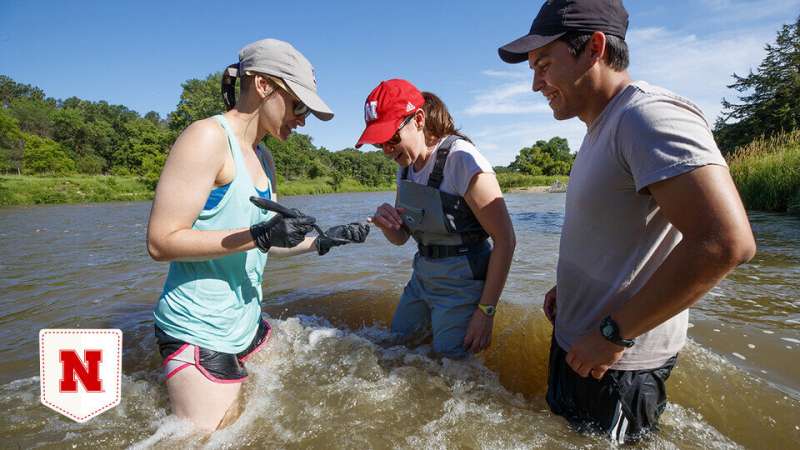Study finds change in Niobrara's nutrients following 2019 flood

Rivers transport important nutrients across landscapes and into larger bodies of water. Among those nutrients are nitrogen and phosphorous, which stimulate the growth of crops but, when accumulating in water, may also yield "dead zones" that deprive marine animals of oxygen.
Precipitation can influence how nutrients get into and flow within rivers. But relatively few studies have examined how extreme flooding—more frequent and intense yet less predictable amid ongoing climate change—might alter that nutrient transport.
To investigate the effects of the historic flood that submerged the Cornhusker State in spring 2019, Nebraska's Jessica Corman and former UCARE student Matthew Chen analyzed nutrient concentrations in the Niobrara River from June through November of both 2019 and 2020. The team compared the concentrations with those recorded from 1990 to 2018.
In the two years following the flood, concentrations of total phosphorous doubled—an increase that was more or less expected, and suggests that agricultural runoff is contributing to phosphorous in the Niobrara.
By contrast, concentrations of nitrate—a nitrogen-based compound that can leach into waterways—declined by 91.5%. While phosphorous reverted to its pre-flood concentrations by fall 2020, nitrate remained low even after the flood waters receded, a finding the researchers called "relatively unique."
Why the persistent drop? The researchers aren't sure. It could stem from flooding-based losses in the Niobrara's organic matter, whose decomposition can reduce nitrate concentrations. Another hypothesis: High precipitation following the flood may have helped flush nitrate from the groundwater that feeds the Niobrara.
Continually monitoring the Niobrara is essential to determining whether the post-flood decrease in nitrate will subside or endure, the team said. Analyzing nutrient cycles during and after future floods, especially by deploying more in-river sensors, could also help clarify the causes of the waning nitrate.
The current study appears in River Research and Applications.
More information: Matthew Chen et al, Nutrient and sediment dynamics change following a major flood event on a large, grassland river, River Research and Applications (2022). DOI: 10.1002/rra.3982
Provided by University of Nebraska-Lincoln



















